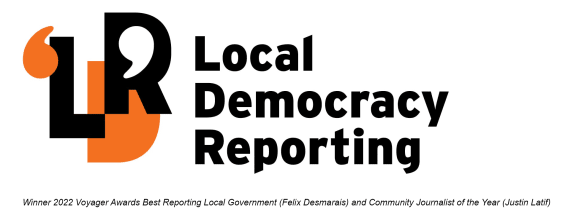
The National Gang List shows a 188-percent increase in recorded gang members in the Tasman Police District between October 2017 and April 2023. Photo: Max Frethey / Nelson Weekly
A huge increase in the number of people on the National Gang List (NGL) who live in the Tasman Police District has been attributed to the Labour government's "soft-on-crime approach" by National's candidate for the region, Blair Cameron.
"That is totally unacceptable for everyone in Nelson and Tasman," he said.
In October 2017, the National Gang List showed 68 patched or prospect adult gang members in the Tasman Police District - which includes the West Coast, Marlborough, and Kaikōura as well as Nelson and Tasman.

By April 2023, that figure had increased to 196 members, a 188 percent increase.
The NGL is maintained by the Gang Harm Insights Centre, and does not record gang associates or those who may be affiliated.
"Nationwide, gang numbers have increased by more than 60 percent under the Labour government," Cameron said. "Labour still hasn't woken up to the problem and as a result, it is getting worse every day."
However, police cautioned that the NGL was established for intelligence purposes and not for counting membership numbers, and explained that any increase on the list should not be seen as a definitive increase in gang membership.
"While there has been a general increase in numbers on the NGL since 2016, these are attributable to a variety of factors, including changes in recording processes and methodology, improved intelligence collection, and collation capability, as well as new individuals being identified as joining gangs," a spokesperson said.
They added that people who simply drifted away from gang involvement were also much less likely to be removed due to the "the challenges of corroborating their exit" which could have a ratcheting effect on the list numbers.

National's candidate for Nelson, Blair Cameron says the huge increase in the number of people on the National Gang List who live in the Tasman Police District is attributable to the Labour government. Photo: Max Frethey / Nelson Weekly
Detective senior sergeant Shane Dye from the Tasman District Organised Crime Unit acknowledged there had been a general upward trend over the six years to May 2023 in the number of instances where a patched or prospect gang member had been linked to an offence.
"However, looked at in a broader context, a general upward trend has been observed over the same period for the entire population, gang members and non-gang members included," he said.
The top offence types over the six years to May 2023 by gang members in Tasman were violence - though Shane noted that 43 percent of the violent offending was committed in a family harm context - drugs and antisocial offending, and dishonesty offending.
"I have zero tolerance for the harm caused by gangs in our community," said Nelson's Labour MP Rachel Boyack. "Gangs have existed for decades in New Zealand and the answers to reducing the harm they cause are complex."
She disagreed that Labour has been soft on crime, highlighting an additional 1800 police officers delivered around the country - including 54 in the Tasman Police District - and putting 700 police into roles working to dismantle gangs and reduce harm.
"Our funding for Operation Cobalt has resulted in over 38,000 charges laid against gang members and their associates. Police have also seized nearly 400 illegal firearms."

Nelson's Labour MP Rachel Boyack says government funding of Operation Cobalt has resulted in 38,000 charges laid. Photo: Max Frethey / Nelson Weekly
Boyack also acknowledged that a large proportion of gang crime in Nelson was related to family harm.
"I work closely with organisations like Women's Refuge and Mana Wāhine, to ensure they have the resources and support they need to help women leaving violent relationships," she said. "The government is supporting agencies to work together to combat family harm, and this is showing good results locally."
Local Democracy Reporting is Public Interest Journalism funded through NZ On Air.




![Victory Community Centre’s Jenni Bancroft said a 0 per cent increase, as was originally planned by council, would have had a “negative impact”. Photo: Max Frethey/Nelson Weekly. [via LDR single use only]](https://media.rnztools.nz/rnz/image/upload/s--hsMnmj7Z--/ar_16:10,c_fill,f_auto,g_auto,q_auto,w_288/v1687142779/4L75XMW_Jenni_Bancroft_scaled_jpg?_a=BACCd2AD)


